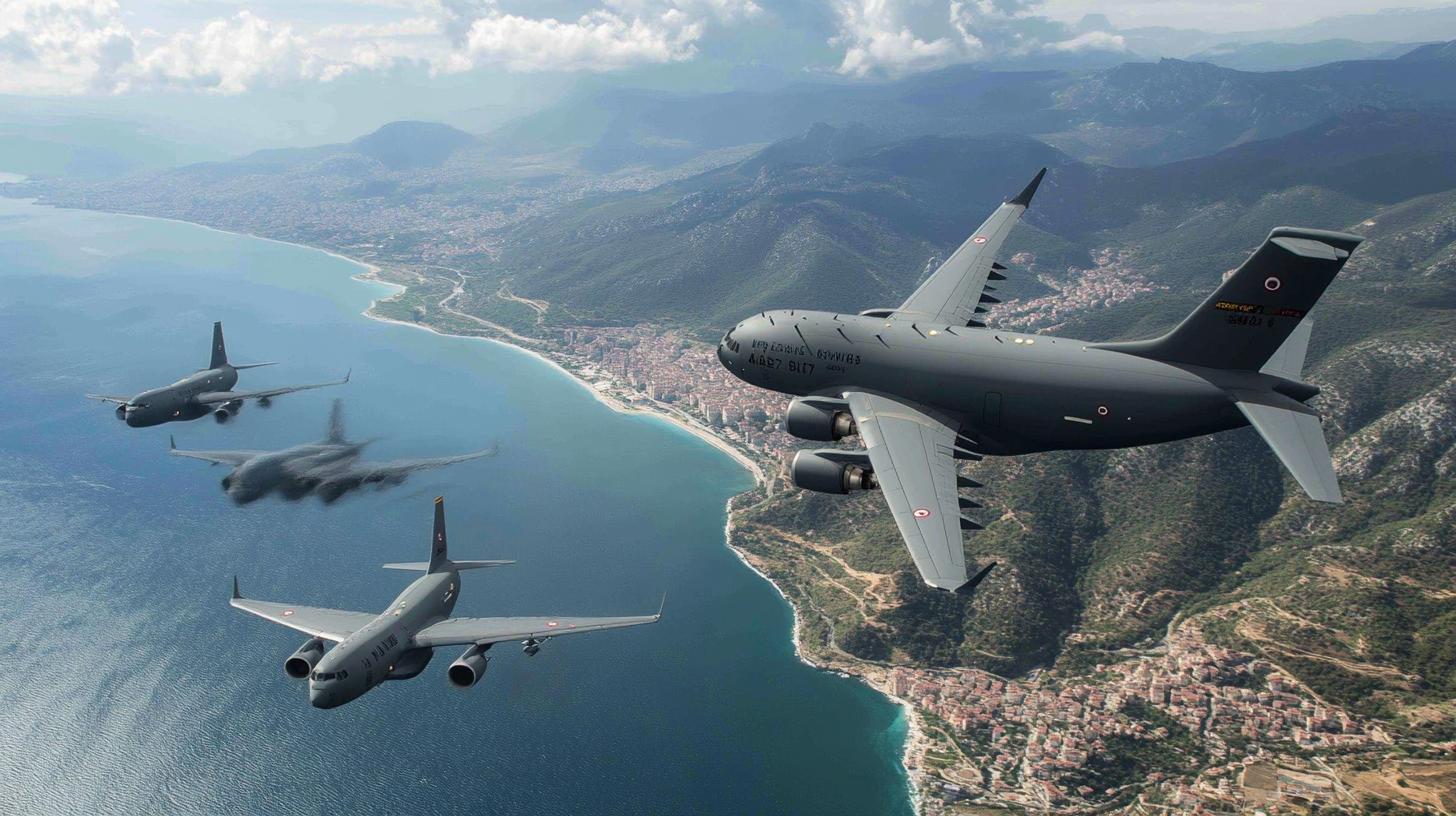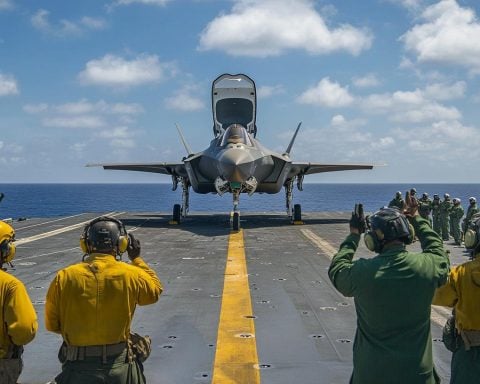Turkey Pushes Forward with Air Power Expansion Amid Sanctions Strain
Turkey is actively working to enhance its aerial capabilities ahead of the anticipated deployment of its national aircraft, the KAAN. The Turkish Ministry of National Defense has outlined its strategic approach to bolster the country’s air fleet by diversifying and updating its inventory with modern combat aircraft. This undertaking will persist until the KAAN becomes operational.
As part of this effort, Turkey has initiated a substantial contract involving the acquisition of 40 F-16 Block 70 fighter jets, coupled with specialized munitions. This procurement deal has commenced with an initial financial outlay of $1.4 billion, while further technical negotiations continue. Additionally, discussions on purchasing 40 Eurofighter jets are reportedly progressing favorably.
The quest to secure F-35 jets has also been reinvigorated, with an official request lodged with international partners. While Turkey has already made payments and six F-35 jets are awaiting deployment, the delivery has been complicated by sanctions imposed under the CAATSA act, making Turkey the first NATO ally to face such circumstances.
Ministry representatives emphasize the need for alliance members to act in accordance with shared security objectives and remove all embargoes. This situation highlights the tension Turkey faces between strengthening its air force and navigating the diplomatic challenges posed by international sanctions.
Revolutionizing the Skies: How Turkey’s Air Power Ambitions Could Reshape Global Aviation
As Turkey ambitiously expands its air power capabilities, the implications for global aviation and military technology are both promising and contentious. The nation’s drive to revamp its aerial arsenal extends beyond mere enhancement; it signals a shift that could have ripple effects throughout the aviation industry and international military alliances.
Unveiling the Strategic Horizon: Beyond the KAAN Aircraft
While Turkey’s focus remains on the development of its indigenous KAAN aircraft, this endeavor is merely the tip of the iceberg. The sought-after acquisition of F-16 Block 70 and potential Eurofighters presents an intriguing landscape for technological advancement. These purchases indicate a combination of deploying cutting-edge Western technology alongside indigenous developments. Could this blend position Turkey as a pivotal player in aviation innovation?
Advantages: A Leap Towards Technological Sovereignty
By diversifying its aircraft inventory, Turkey could reduce dependence on foreign technology suppliers and mitigate political risks associated with international sanctions. Possessing a fleet that includes both modern Western aircraft and indigenous models not only diversifies capabilities but also symbolizes Turkey’s commitment to achieving autonomy in defense technology. Such autonomy might spur advancements in other sectors, such as aerospace engineering, cyber defense, and avionics.
Controversies and Diplomatic Challenges
Turkey’s ambitions are not without controversy. The U.S. sanctions under the CAATSA act have put a strain on Turkey’s ability to clinch deals, like the much-desired F-35 program. This situation raises questions about the future of NATO partnerships and how alliances adapt when members’ defense interests clash with collective security agreements. How will these conflicts affect NATO’s cohesion and collective military strength?
Disadvantages: Diplomatic Isolation or Strengthened National Defense?
One downside of Turkey’s current predicament is potential diplomatic isolation. If Turkey is perceived as diverging from NATO dynamics, it could face further estrangement. On the other hand, a stronger national defense might enhance Turkey’s standing in regional geopolitics, particularly in the Middle East and Eastern Europe. But will this gamble pay off in long-term security or lead to unintended consequences in international diplomacy?
The Future of Air Power Innovation
Turkey’s situation demonstrates the complex interplay of geopolitics and technological growth. As more nations look to bolster their own defenses while managing international relations, new questions arise: How will technological collaboration evolve amidst political tensions? Can international partnerships survive the new wave of military technological independence? These inquiries reflect broader concerns within global technological development.
Exploring these dynamics could significantly alter the landscape of defense technologies and international alliances. As nations like Turkey pave their own paths, the world keenly observes the outcomes of such strategic decisions.
For further reading on global aviation trends, visit boeing.com and survey military defense technology updates on lockheedmartin.com.



















